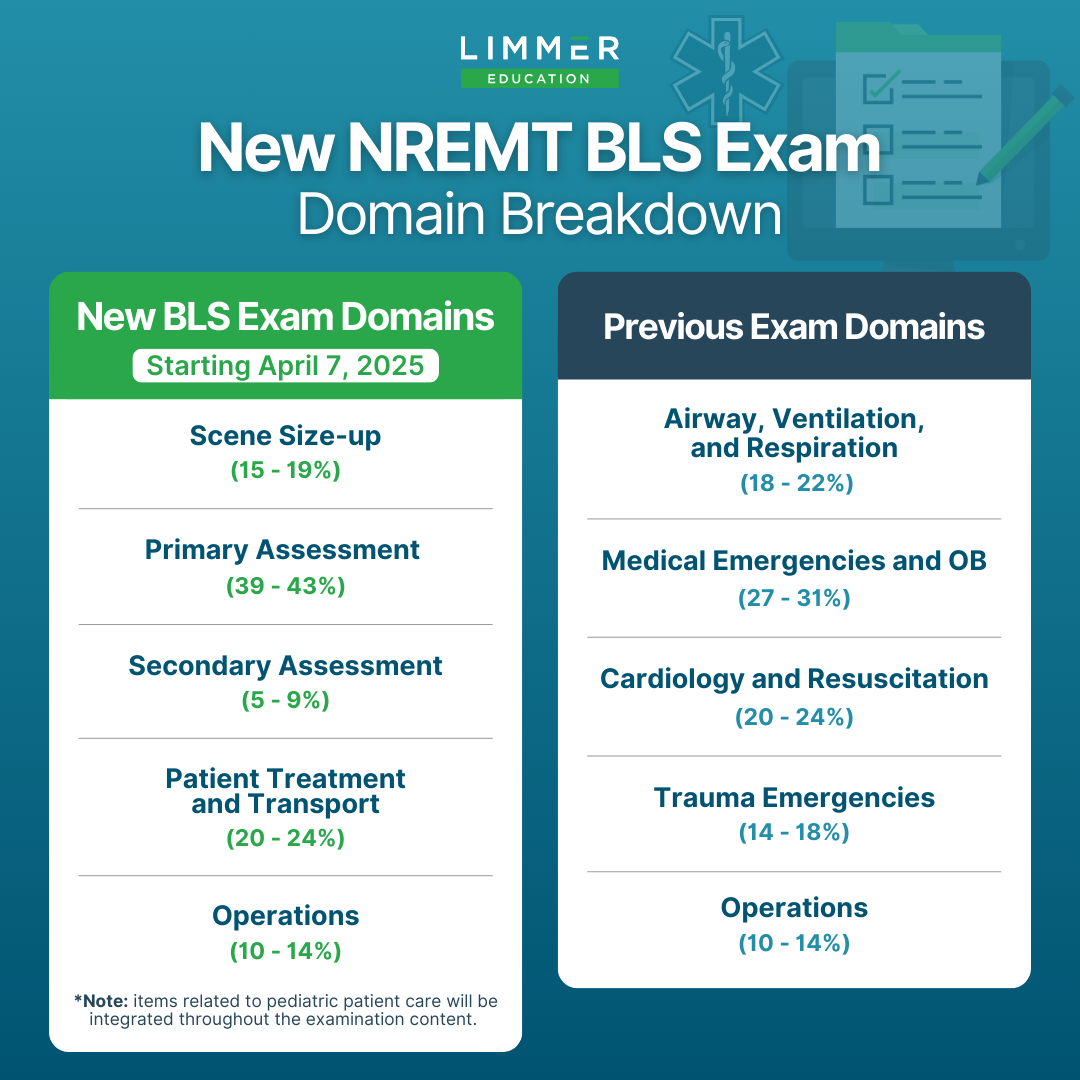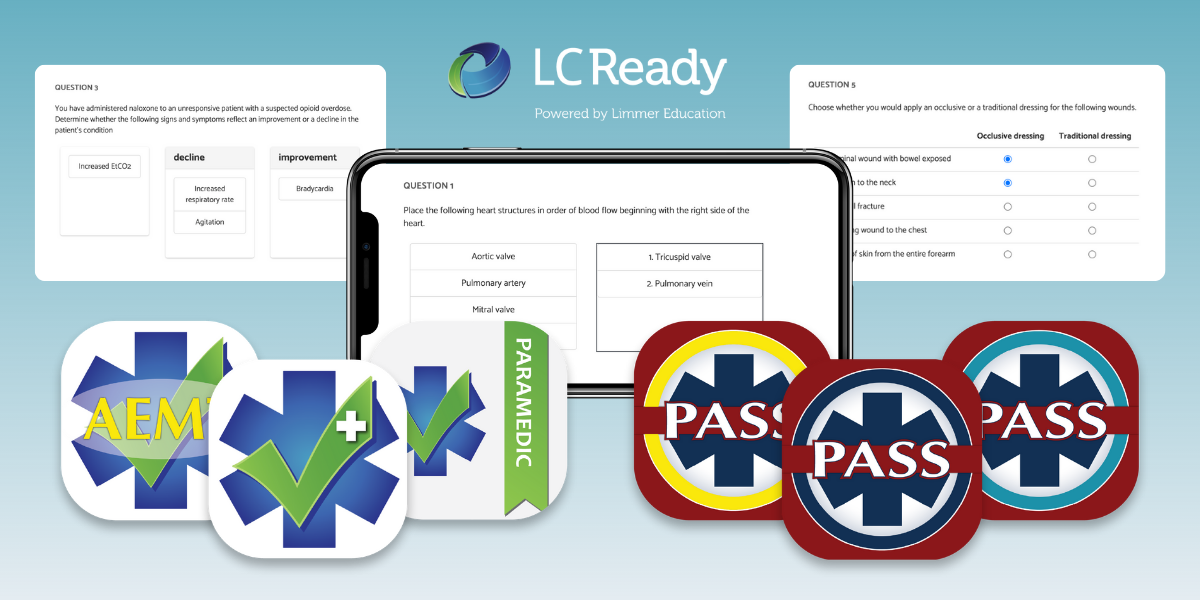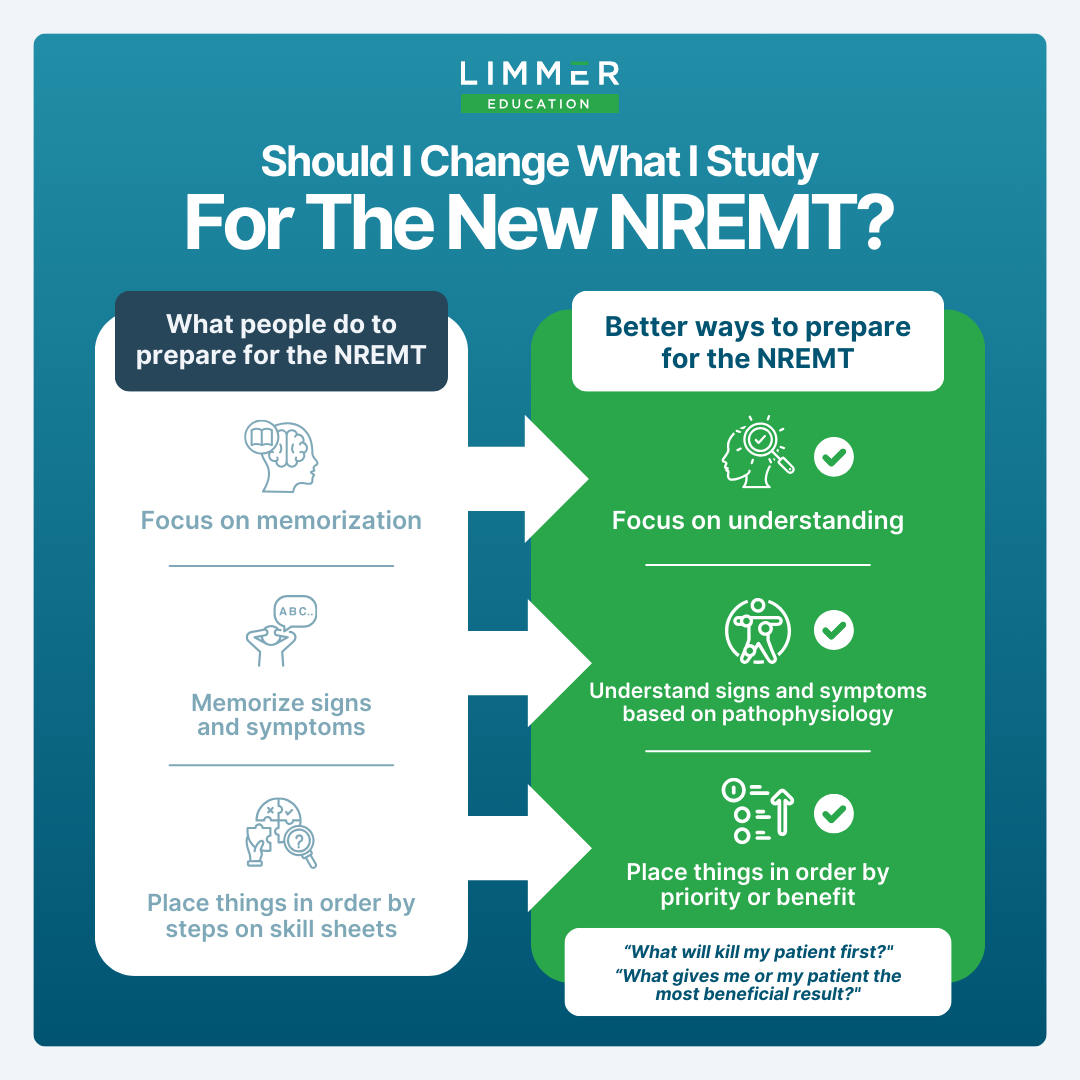
Dan Limmer, BS, NRP

by Limmer Education
Our articles are read by an automated voice. We offer the option to listen to our articles as soon as they are published to enhance accessibility. Issues? Please let us know using the contact form.
Are you a student in EMT class who will take the NREMT exam after April 7? If so, you’ll want to read this article about the National Registry exam changes!
The exam is changing. Change causes stress. In the big picture, the changes aren’t going to be extensive. The NREMT is using much of their existing bank of questions, but the proportions of the questions will be different and there will be an assessment focus. Read on for the full details.
Every five years the NREMT does a practice analysis. They do research to determine what EMTs do on a day-to-day basis and use this to be sure their exam is relevant. This analysis determined that patient assessment was a significant focus of the EMT. The National Registry changed the exam accordingly.
Note: Limmer Education's products are fully up to date with all NREMT changes! Our EMT products have brand new assessment-focused content, revised scoring metrics to match the Registry, and even more TEIs than before!
Right now, the NREMT arranges its test questions into five key topics or domains. Starting April 7, 2025, questions will be arranged into five new domains for BLS: Scene size-up, primary assessment, secondary assessment, patient treatment and transport, and operations.

Again, the NREMT will continue using most of their existing questions. Questions focused on airway, medical, cardiology and trauma aren’t going away.
The other change is that TEIs (technology enhanced items) will start being scored on BLS exams. If you’ve taken the exam already, you’ve seen TEIs like drag and drop questions and multiple response items, but only as pilot questions. Starting in April, the new question types will count toward your final score.
You can practice TEIs on our PASS apps, Review apps, or at EMTReview.com.

Yes. Your class will prepare you for the new exam. Don’t forget that you’ll still need to learn all the material in your class—the National EMS Education Standards haven’t changed. That is what your class and book are based on. You’ll need to know it all—and can still be tested on it.
Many of the things we talk about that would have improved your performance on the old exam, will be even more relevant now. Here are some examples of what people think they need to do to prepare versus what they should do to prepare:

To apply these principles, consider that many class exams ask you to recall things. The National Registry exam will ask you to apply knowledge to a scenario. This is a big difference.
Consider a patient presentation like this in a question:
Getting this question correct requires use of your size-up, pathophysiology, and assessment knowledge. This patient is in compensated shock. Did you recognize these important facts in the scant three-sentence question?
The patient was the driver and the collision was side impact. This means that flank pain may be from injury to the left kidney—a solid and highly vascular organ that can bleed and cause shock. (mechanism of injury/size-up and anatomy and physiology)
The patient is slightly anxious. This can indicate shock. (pathophysiology and assessment)
Elevated enough to cause concern but still fall into that deceiving and sometimes false “normal” range where the "normal" pulse is 60 - 100 and respirations are normal between 12 - 20. The higher end of both of those ranges can indicate shock. (pathophysiology and assessment)
The pulse pressure is narrowed. It should be at least 25% of the systolic pressure (in this case 26.5) but is 22. (pathophysiology and assessment)
The skin is cool and dry. Cool isn’t good. It’s not moist but that doesn’t invalidate cool. (pathophysiology and assessment)
Do you see the difference between memorization and application? And how pathophysiology, patient assessment, and understanding are key to success?
Someone who glided through class and didn’t learn application could easily say, “Well, they are only slightly anxious and a BP of 106 systolic could be normal for a 23-year-old, and the pulse isn’t tachycardic. Heck, he just was in a crash.” But that misses the totality of the situation—and the potential criticality of this patient.
This question could go on to ask assessment-based conclusions and end with NREMT-style prompts:
You will likely make this patient a priority because of your suspicion of compensated shock. This may also change your opinion on oxygen administration because shock may override the 96% SpO2 and make oxygen a clinically relevant choice more than others given.
What if the NREMT gave you choices for the patient’s presentation? Would you choose the right one if the choices were hypovolemia, anxiety, unrecognized head injury, and distributive shock? (hypovolemia is correct).
Understanding the potential for compensated shock will change your priorities. It should cause you to expedite transport, perform certain assessments enroute, and choose an appropriate destination.
It's like cooking with a recipe. You can have all the ingredients, but that doesn’t mean it will taste good unless you put it together correctly.
What’s the point? Yes, the exam is changing. But not crazy changing. The things that are key to passing the test haven’t changed—and they are the things that will make you a good EMT: Being able to think, understand, assess a patient, and put a scenario together properly.
Limmer Education has changed our products to match the new exam by adding additional patient assessment content and the new technology enhanced items. Our practice tests are challenging, ask you to think and apply (like the NREMT) and will help you learn. We lead the pack in exam preparation and will be ready for you when you study for your class and prepare for the NREMT.
Limmer Education's products are fully up to date with all NREMT changes! Our EMT products have brand assessment-focused content, revised scoring metrics to match the Registry, and even more TEIs than before!
Our famous EMT, AEMT and Paramedic PASS apps are more challenging than the NREMT itself. If you can succeed on PASS practice exams, you can succeed on the NREMT. Includes all the newest question types. Check out the PASS apps.
These help you review and build on the material you learned in class while preparing you for the NREMT. Strengthen your weakest areas and train yourself to think for the exam! Includes all the newest question types. Check out the Review apps.
In 2 hours, learn to analyze NREMT test questions. This video walks you through practice questions (including TEIs) and teaches you how to approach challenging questions. There’s nothing else like it! Stream from LC-Ready.com.
Affordable membership site for EMT and paramedic. Videos, study guides, live review sessions, and lots of practice exams. High quality questions closely resemble those found on the NREMT. Practice exams include all the NREMT's new question types! Join EMTReview.com.

Dan Limmer, BS, NRP

Mike Miller

Limmer Education